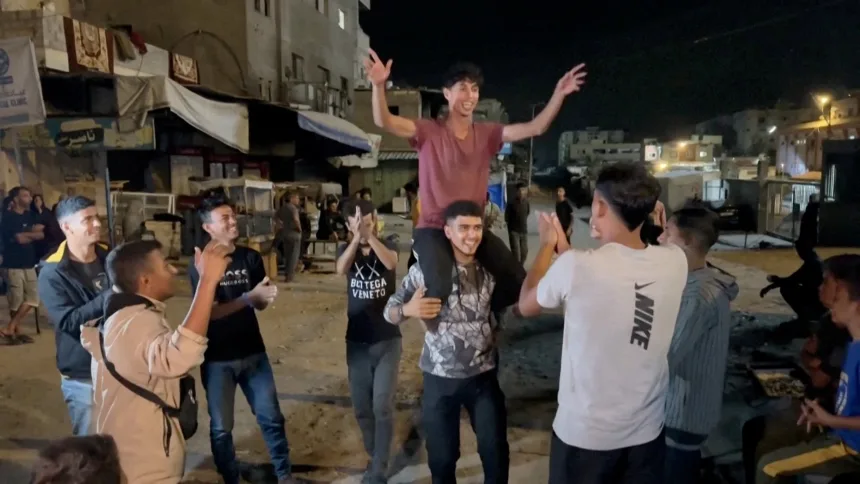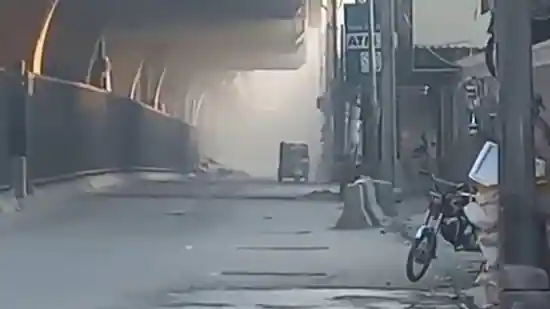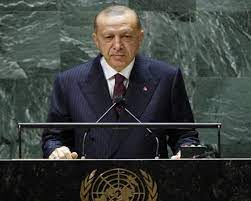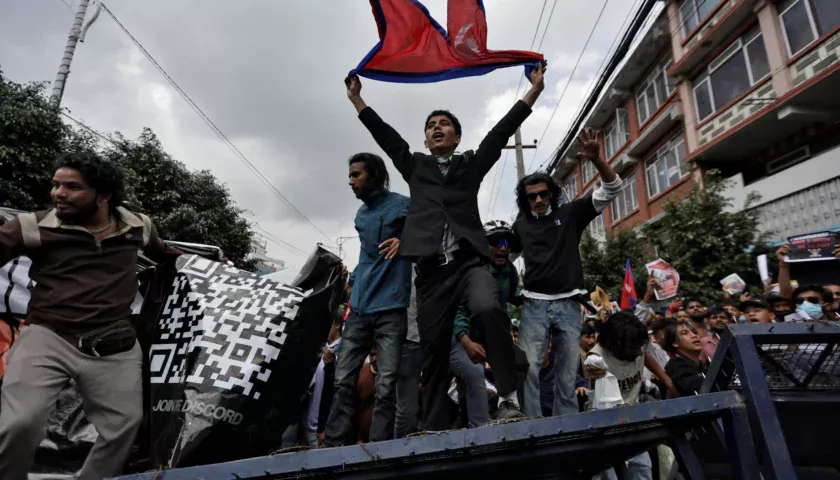Gaza Ceasefire Signed in Sharm el-Sheikh: A Turning Point or Temporary Pause?
By: Javid Amin | 08 October 2025
After nearly two years of relentless violence, a ceasefire between Israel and Hamas has officially kicked in, marking the first phase of a 20-point peace framework put forward by U.S. President Donald Trump. The truce incorporates a hostage-prisoner exchange, a phased Israeli military withdrawal, and the flow of humanitarian aid into Gaza. The deal was brokered via intensive diplomacy involving the U.S., Egypt, Qatar, and Turkey, and signed in Sharm el-Sheikh, Egypt.
The announcement today has triggered celebrations and relief across Gaza and in Israel, but key challenges loom: prior ceasefires have unraveled, Israeli cabinet approval is still pending, and the question of how Gaza will be governed remains unresolved. This fragile arrangement offers a glimmer of hope—but success will depend on discipline, verification, and sustained international engagement.
Why This Truce Matters
The Israel–Hamas conflict in Gaza has become a humanitarian catastrophe: over 67,000 Palestinians have perished, many of them civilians, and infrastructure is in ruins. Al Jazeera+2Reuters+2 For Israelis, the trauma of October 7, 2023, hostage-taking, and repeated rocket barrages looms large. The region has teetered on broader escalation.
Against this backdrop, today’s ceasefire is not just a pause in fighting—it is a political signal, a test of will, and potentially the opening chapter of a broader peace process. But as many analysts caution, “ceasefire” in the Middle East is often a temporary lull, not a permanent truce.
In this article I walk you through:
-
The origins and contours of the agreement
-
The substance: what each side agreed to
-
Reactions from affected communities and global leaders
-
Hidden pitfalls and fault lines
-
What must happen now to make this ceasefire stick
The Road to Agreement: Key Milestones & Diplomacy
To understand today’s ceasefire, we must trace how the conflict got here, how previous ceasefires fared, and how this 20-point plan crystallized.
Historical Context & Previous Ceasefires
Since Hamas’ takeover of Gaza in 2007, multiple flare-ups have seen cycles of fighting and fragile truces. The latest war began with the October 7, 2023 attack by Hamas militants on Israeli towns—killing roughly 1,200 and capturing over 200 hostages. Israel responded with a large, sustained air and ground campaign targeting Hamas and infrastructure across Gaza.
In early 2025, a ceasefire was brokered involving phased prisoner exchanges and aid flow, but over time the terms unraveled—Israel accused Hamas of continuing attacks or violating terms, and Hamas accused Israel of not withdrawing, of restricting aid, or carrying out strikes.
The credibility gap from past ceasefires looms: both sides have strong incentives to resume once tensions build again. This makes today’s deal especially delicate.
Trump’s 20-Point Plan: Conception & Leverage
On September 29, 2025, President Trump, alongside Israeli Prime Minister Benjamin Netanyahu, unveiled a 20-point proposal aiming to end the Gaza war. The plan encompassed:
-
A ceasefire
-
Release of Israeli captives
-
Release of Palestinian prisoners
-
A phased Israeli withdrawal to agreed lines
-
Disarmament of Hamas
-
A transitional technocratic governance structure for Gaza
-
Reconstruction funding
-
A roadmap toward Palestinian statehood (conditional)
One key element: Trump publicly threatened Hamas, giving them a deadline to accept the plan or face consequences.
The 20-point plan was seen by supporters as bold, though critics called it vague and demanding. For instance, Hamas accepted parts of it (hostage release, governance) but balked at disarmament demands.
Final Hurdles & Mediation
The deal was stitched together through intensive mediation over days in Sharm el-Sheikh, Egypt. U.S. envoys including Steve Witkoff and Jared Kushner, Qatar, Egypt, and Turkey played central roles.
Mediators focused on bridging differences on:
-
The timing and sequencing of withdrawals
-
The exact list and number of prisoners exchanged
-
A “yellow line” or agreed line to which Israeli troops would retreat
-
Ensuring the verification and compliance mechanisms
-
The governance model for Gaza post-conflict
In the final hours, documents were signed in Sharm el-Sheikh (though some media note that ratification by Israel is still pending) and the ceasefire was declared to begin once votes are cast in Israel’s government.
What the Ceasefire Actually Entails: Detailed Terms & Mechanics
Though many terms remain opaque or subject to change, we have a consolidated picture from public reporting, government statements, and mediator leaks. Below is the strongest, cross-verified reconstruction of the deal’s key elements.
Hostage / Prisoner Exchange
-
Hamas obligations: release 48 Israeli captives, of whom 20 are believed alive.
-
Israel obligations: in exchange, Israel will free 2,000 Palestinian prisoners, including women, children, and some serving life sentences.
-
The timeline: exchange must occur within 72 hours of ratification of the agreement.
This is perhaps the most sensitive component: each side’s list, verification (are hostages alive?), and security assurances are difficult to negotiate and monitor.
Military Withdrawal & Suspension of Hostilities
-
Ceasefire: All aerial bombardment, artillery shelling, and ground incursions are to be suspended once Israel ratifies the deal.
-
Troop pullback: Israel will partially withdraw forces and reposition behind an “agreed upon line” (sometimes referred to as a “yellow line”) within 24 hours of ratification.
-
The withdrawal is only partial, not full, and “battle lines will remain frozen” during transition.
-
Some media reports indicated continued strikes in Gaza’s northern or border areas even as the ceasefire was announced—suggesting delays or local violations.
The key phrase here is “partial withdrawal”—this is not an Israeli exit from Gaza under the agreement’s first phase.
Humanitarian Assistance & Reconstruction
-
The agreement allows 400 aid trucks to enter Gaza in the first five days to alleviate famine, shortages of medical supplies, and the ruins of basic infrastructure. (This detail is in your summary; media coverage more broadly references “expedited aid” entry.)
-
Reconstruction of Gaza will be a major challenge—but the peace plan calls for an international effort, likely involving Gulf states, UN agencies, and donor nations.
-
The deal avoids forced displacement or mass population transfers.
Aid flow, access to medicines, fuel and clean water, rebuilding of power grids, and resettlement of displaced populations will test this truce from day one.
Verification, Mediation & Guarantees
-
The agreement brings in international guarantors: the U.S., Qatar, Egypt, and Turkey will monitor implementation.
-
The parties are expected to provide lists (prisoners, hostages) to third-party monitors for verification.
-
Should violations occur, the agreement provides mechanisms for raising complaints, inspections, or restoring hostilities. (Details remain classified or undisclosed.)
-
A future phase likely focuses on disarmament of Hamas, security guarantees, and the governance of Gaza under a transitional administration.
A major unknown is whether Israel will insist that Hamas fully disarm in the first phase—or postpone that to phase two.
Reactions from the Ground and Across the World
A ceasefire deal of this scale naturally provokes a spectrum of responses—from jubilation to skepticism, celebration to condemnation. Below is a sampling of reactions across communities, governments, and analysts.
In Gaza: Relief, Hope & Wariness
In Gaza, the announcement prompted scenes of jubilation: displaced families poured into the streets, flags waved, and people embraced. Many spoke of the ceasefire as a prayer answered.
One quote widely circulated:
“Thank God for the ceasefire, the end of bloodshed and killing,” said Abdul Majeed Abd Rabbo from Khan Younis. (Your summary)
Yet alongside hope, there is circumspection. Critics warn that past truces were broken, and many fear that even a short resumption of hostilities could erase gains. Also, ordinary Gazans face unmet needs: food, water, electricity, medicines, and shelters must be restored from scratch.
In Israel: Mixed elation and political caution
For many Israelis, especially families of hostages, the announcement brought overwhelming relief.
One emotional testimony:
“I can’t explain what I’m feeling—it’s overwhelming,” said Einav Zaugauker, mother of a captive. (Your summary)
Public mood was euphoric in areas like Tel Aviv’s Hostages Square, where people gathered to thank Trump and call for swift resolution.
But politically, the deal is not without friction. In Israel’s security cabinet, far-right ministers such as Bezalel Smotrich openly opposed parts of the agreement, especially releasing Palestinian prisoners. The Guardian+3CBS News+3The Guardian+3 The cabinet must formally ratify the deal; until then, the truce is conditional.
Regional and Global Reactions
-
Egypt, Qatar, Turkey: These states, as mediators, hailed the deal as a historic step toward ending the war.
-
United Kingdom: PM Keir Starmer called it a “moment of profound relief.”
-
Russia: Lavrov described Trump’s plan as “the best option we have” while noting gaps, such as absence of West Bank measures.
-
United Nations / International Organizations: UN Secretary-General António Guterres urged full implementation and dignity in the release of captives.
-
Analysts / Commentators: Some see this as Trump’s biggest diplomatic opportunity; others warn the devil lies in sequencing and enforcement.
Across capitals from Brussels to Riyadh to Islamabad, calls for restraint, verification, and commitment to a two-state solution echoed.
Under the Surface: Key Challenges & Fragile Fault Lines
While the deal is bold, several fault lines could destabilize it. Some are structural; others are tactical. These are the dangers that must be managed.
1. Cabinet Ratification and Israeli Political Risk
The ceasefire deal only becomes operative once Israel’s security cabinet and full government ratify it. Right-wing coalition members might reject, delay, or demand modifications. Even if ratified, parties may later backtrack or withdraw support. This is not a solid legal treaty, but a political compact—governments change, parties shift, and pressure builds.
2. Credibility from Past Failures
Every party knows how ceasefires have collapsed before. If a single breaking point—say, one drone strike or rocket salvo—occurs, both sides may rush to resume hostilities. This “tit for tat” dynamic is a perennial danger.
3. Verification & Enforcement Gaps
The plan’s success hinges on robust monitoring:
-
Are hostages alive? Are they released fully?
-
Are Palestinian prisoners exchanged correctly?
-
Are Israeli troops genuinely withdrawing beyond certain fronts (not just symbolic relocation)?
-
Can violations be independently confirmed and acted upon?
Without credible third-party monitors with enforcement teeth, the deal risks being hollow.
4. Governance of Gaza & Hamas’s Role
One of the trickiest questions is who rules Gaza going forward. Trump’s plan envisages a transitional technocratic government under international supervision. But Hamas already governs de facto, has a significant support base, and is heavily armed.
If Hamas is excluded and refuses to disarm, it may choose to revive an insurgency (nonconventional attacks). If included, Israel insists on disarmament. The tension is acute.
5. Disarmament & Security Guarantees
Israel’s security doctrine demands that Gaza never again pose a threat via rockets, tunnels, or militant infrastructure. The agreement in phase one does not demand full disarmament—but delaying that may leave a ticking time bomb. Hamas has already signaled resistance to disarmament demands.
6. Humanitarian & Reconstruction Delay
Even with 400 trucks of aid promised in first days, the scale of Gaza’s devastation is immense. Repairing utilities, building homes, demining, restoring hospitals—these tasks require months or years. Any delay or mismanagement could aggravate suffering and prompt renewed unrest.
7. External Spoilers & Regional Escalation
Foreign actors—Hezbollah in Lebanon, Iran, or Islamist groups—may seek to exploit any weakness in the truce. A flare from any front could derail the peace. Similarly, Israeli political pressure, domestic security incidents, or protests could force escalation.
What Must Happen Now: A Roadmap to Stability
To convert fragile peace into durable calm, the following steps are essential:
-
Rapid Ratification with Binding Oversight
Israel must ratify quickly, ideally with bipartisan support. The Israeli government must embed the agreement in law or agreement protocols. -
Deploy Strong, Neutral Monitors
An independent monitoring mission—UN, Arab League, or hybrid—must be empowered with real access, cameras, inspections, and consequences for violations. -
Transparent Lists & Verification Mechanisms
The prisoner/hostage lists must be exchanged, scrutinized, and crossverified publicly or under observers to minimize fraud or substituted prisoners. -
Phased Disarmament with Guarantees
A roadmap must be agreed for disarming militant infrastructure in Gaza, with security guarantees, and possibly a hybrid policing force. -
Interim Gaza Governance
The technocratic government needs legitimacy, public trust, and capacity to perform essential services. It must be inclusive and assert function before political transitions. -
Massive Reconstruction & Aid Injection
Donor coordination, demining, infrastructure repair, housing, and public services must begin immediately, with priority to the most vulnerable. -
Conflict Resolution Mechanisms
The agreement needs smart escalation protocols, dispute adjudication mechanisms, and response plans. -
Regional Confidence-Building
Engage Israel’s neighbors, regional states, and encourage normalization and trade ties as incentives for adherence. -
Media & Civic Engagement
Transparent communication to citizens in both Israel and Gaza can reduce rumors, panic, and misinterpretation. -
Path to Politics
In parallel, serious talks on the West Bank, two-state solution, refugees, borders, water, and Jerusalem must proceed without derailing the ceasefire.
Risk Scenarios: Where This Could Fall Apart
-
Ceasefire collapse from a flare-up
A single strike or misfire could cascade into renewed war. -
Political reversal in Israel or Gaza
Leadership changes or internal dissent might unravel commitment. -
Verification failure or accusations of cheating
If one side accuses the other of violating terms without evidence, hostility could resume. -
Governance vacuum in Gaza
If the technocratic government fails, chaos or violent resurgence may follow. -
Spoiler attacks from external actors
Rocket attacks from Lebanon or Sinai, or militia incursions, could be blamed on one side. -
Aid bottlenecks or corruption
Delays or leakages in relief may breed cynicism and unrest. -
Hamas noncompliance with disarmament
If Hamas retains arms while Israel withdraws, strategic asymmetries may reignite conflict.
Given these dangers, the first 72 hours—and indeed the first weeks—are critical.
The Human Face: Voices from Conflict
It’s easy to talk about numbers and terms—but war’s scars are lived by individuals. From refugees and families of hostages, here is what they say and how this pause might matter:
-
Survivors in Gaza remember losing homes, children, livelihoods. For many, a ceasefire is a chance to bury the dead, find missing family, and heal trauma.
-
Hostage families in Israel have lived in limbo, media scrutiny, and constant anguish. Even one release brings relief—but years of waiting test human endurance.
-
Local aid workers and doctors see ceasing fire as an opening to deliver medicine, clean water, shelter, and treat malnourished children.
-
Gazans displaced into tents and UN shelters hope to return—but refuse to rush back until safe and services function.
These voices underscore why this ceasefire is not just diplomatic—it is human, urgent, and fragile.
Outlook: What Comes Next?
If phase one holds, the path ahead could include:
-
Phase two of the peace plan: broader troop withdrawal, full disarmament, political transition, and development funding.
-
An international stabilisation force (perhaps U.S., Arab, or UN) to oversee transition.
-
Negotiations over final status issues: borders, statehood, Jerusalem, refugees, West Bank incorporation.
-
Potentially, reintegration of Gaza governance with the Palestinian Authority—or a new hybrid model.
-
Incremental normalization of Israel with Arab neighbors under broader regional agreements.
However, the alternative path is pessimistic: faltering ceasefire, renewed rounds of violence, humanitarian relapse, and international blame games.
Final Word: A Fragile Beacon of Hope
The ceasefire in Gaza isn’t a full peace—far from it. It is a truce on a fault line, a gamble between war and hope. But after the death, the destruction, the displacements of two war-ravaged years, it is among the few openings humanity has to pause the killing and begin rebuilding trust.
For Gazans and Israelis alike, the longing for peace is a daily breath. For international actors, this is a moment to reinforce, not abandon, diplomacy. The world is watching—not just how this ceasefire is signed, but whether it is upheld by discipline, courage, and generosity.
If this fragile hope is to flourish, it must be protected by strong institutions, moral commitment, and the unyielding will to choose life over war.




